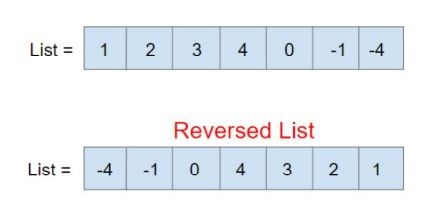
 Data Structure
Data Structure Networking
Networking RDBMS
RDBMS Operating System
Operating System Java
Java MS Excel
MS Excel iOS
iOS HTML
HTML CSS
CSS Android
Android Python
Python C Programming
C Programming C++
C++ C#
C# MongoDB
MongoDB MySQL
MySQL Javascript
Javascript PHP
PHP
- Selected Reading
- UPSC IAS Exams Notes
- Developer's Best Practices
- Questions and Answers
- Effective Resume Writing
- HR Interview Questions
- Computer Glossary
- Who is Who
List reverse function in C++ STL
In this article we will be discussing the working, syntax and examples of list::reverse() function in C++.
What is a List in STL
List is a data structure that allows constant time insertion and deletion anywhere in sequence. Lists are implemented as doubly linked lists. Lists allow non-contiguous memory allocation. List perform better insertion extraction and moving of element in any position in container than array, vector and deque. In List the direct access to the element is slow and list is similar to forward_list, but forward list objects are single linked lists and they can only be iterated forwards.
What is list::reverse()
list::reverse() is an inbuilt function in C++ STL which is declared in header file. reverse() is used to reverse the list container, means the last element of the list becomes the first element of the list.
Below is the graphical representation of the list and and its reversed form −

Syntax
List_name.reverse();
This function doesn’t accepts any parameter.
Return Value
This function returns nothing. It will only reverse the container, whose list is to be reversed.
Example
#include <bits/stdc++.h>
using namespace std;
int main(){
//create a list
list<int> myList;
//inserting elements to the list
myList.push_back(1);
myList.push_back(2);
myList.push_back(3);
myList.push_back(4);
//list before appyling reverse() function
cout<<"List : ";
for (auto i = myList.begin(); i != myList.end(); i++)
cout << *i << " ";
//reversing the list
myList.reverse();
cout<<"\nList after appyling reverse() : ";
for (auto i = myList.begin(); i != myList.end(); i++)
cout << *i << " ";
return 0;
}
Output
If we run the above code then it will generate the following output
List : 1 2 3 4 List after applying reverse(): 4 3 2 1

